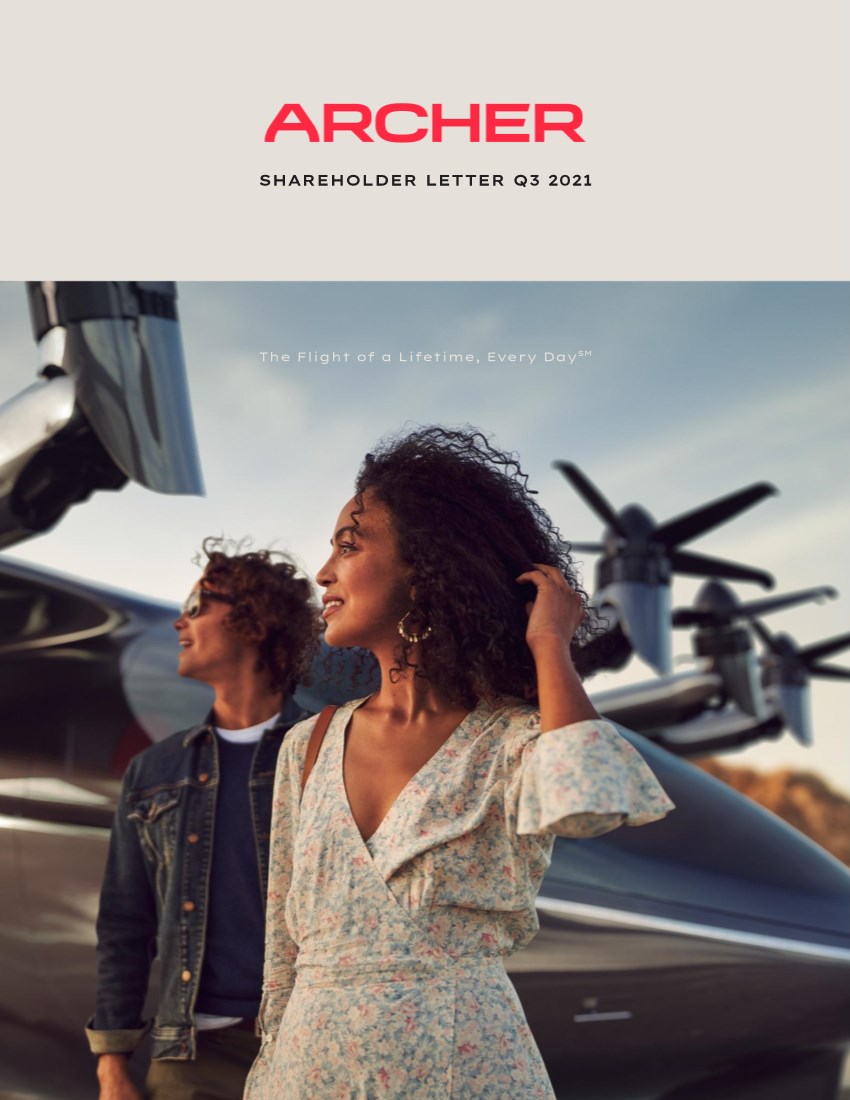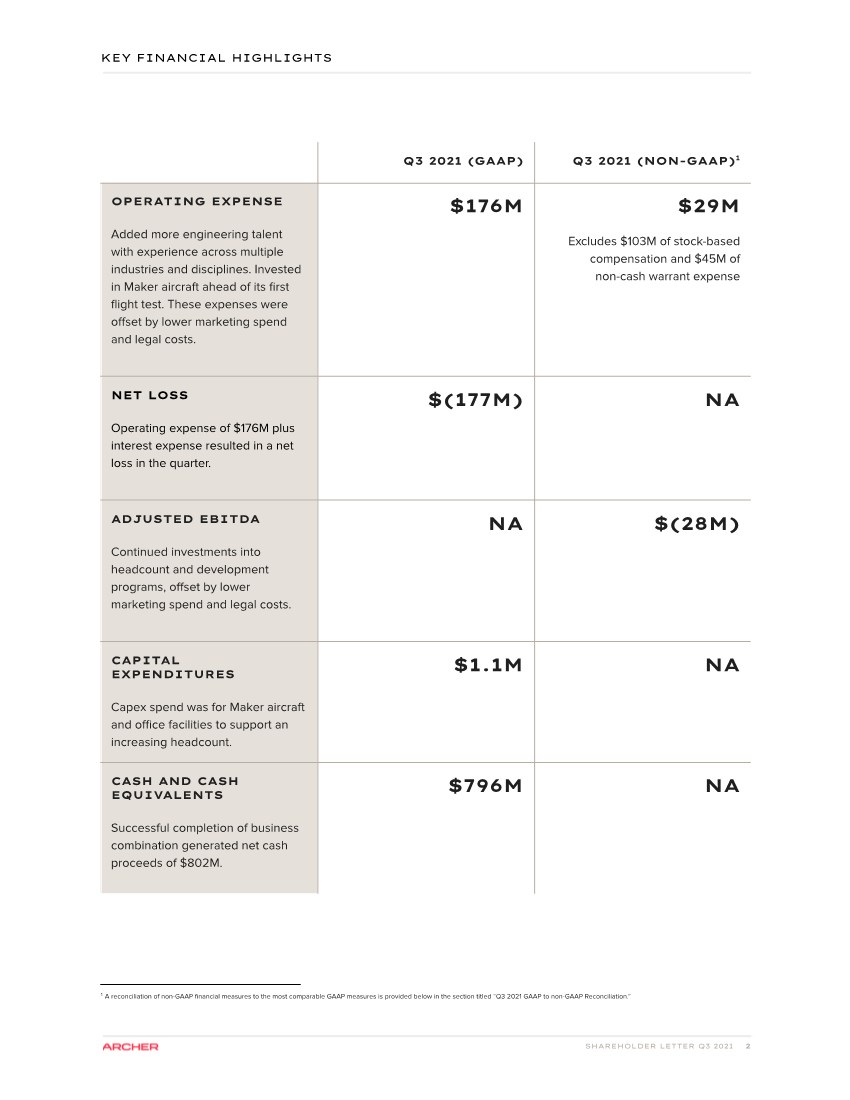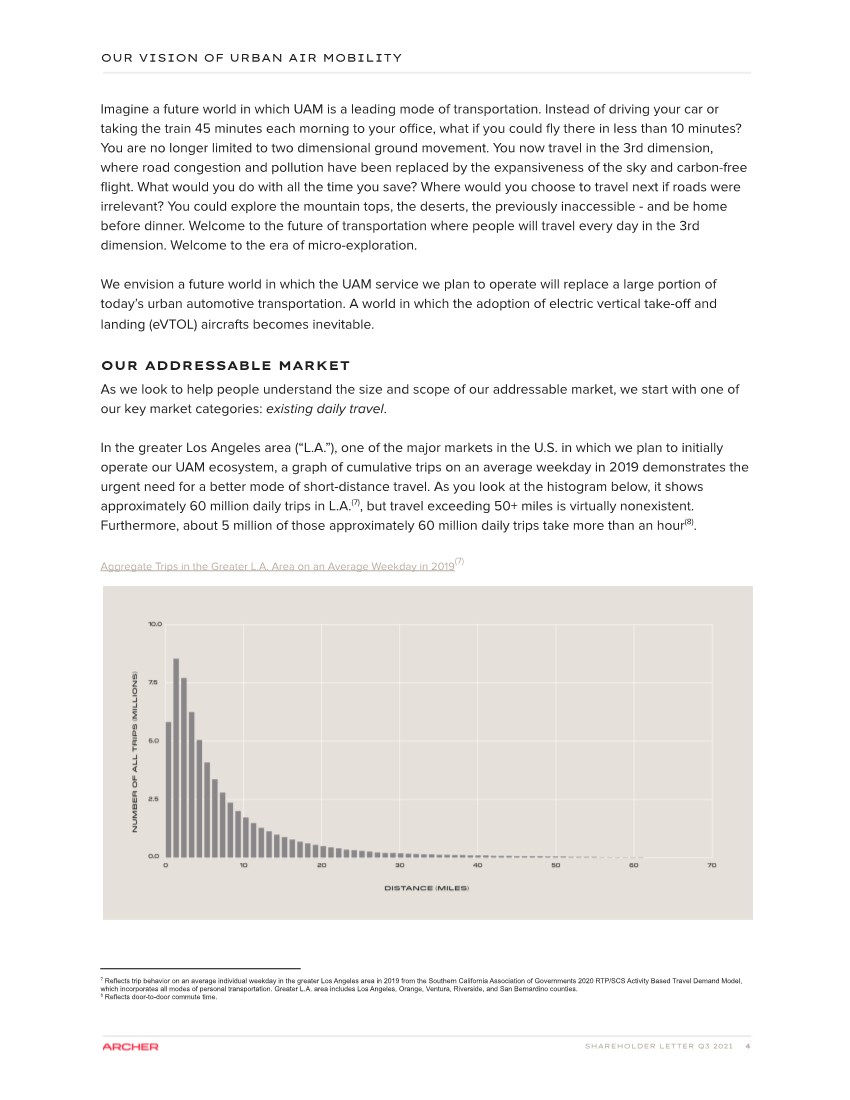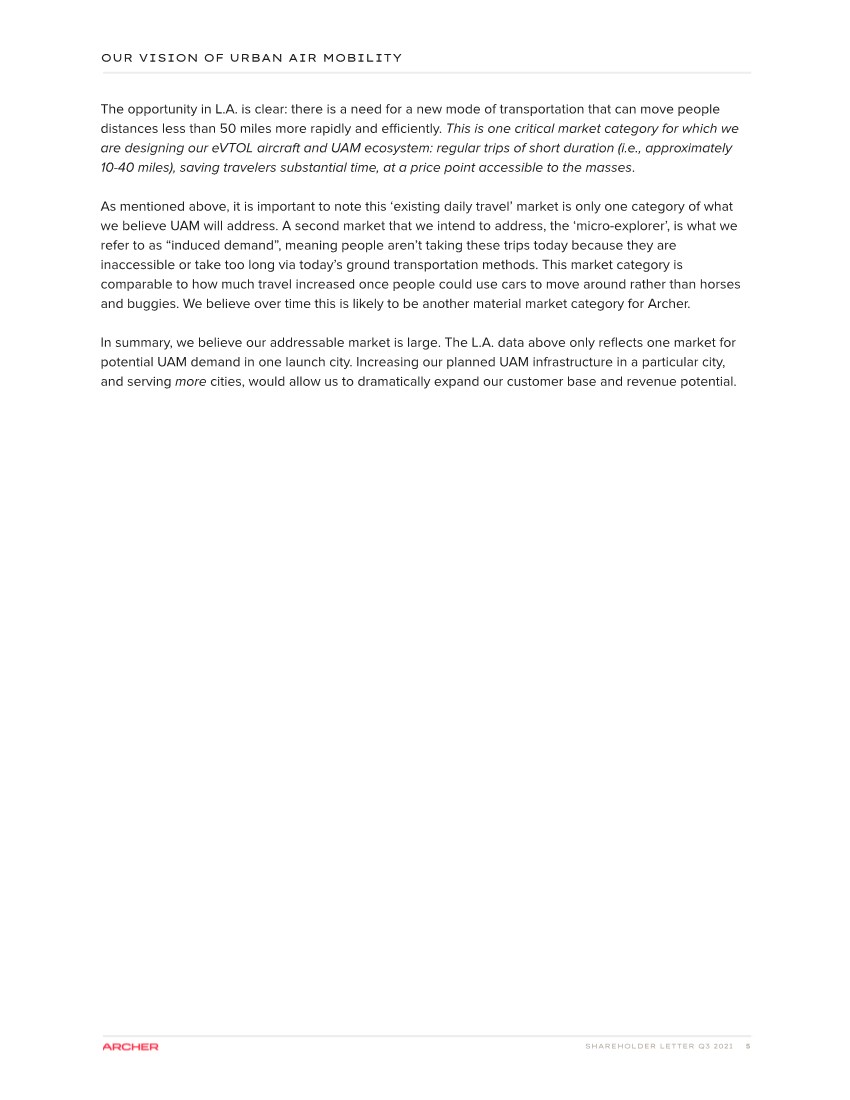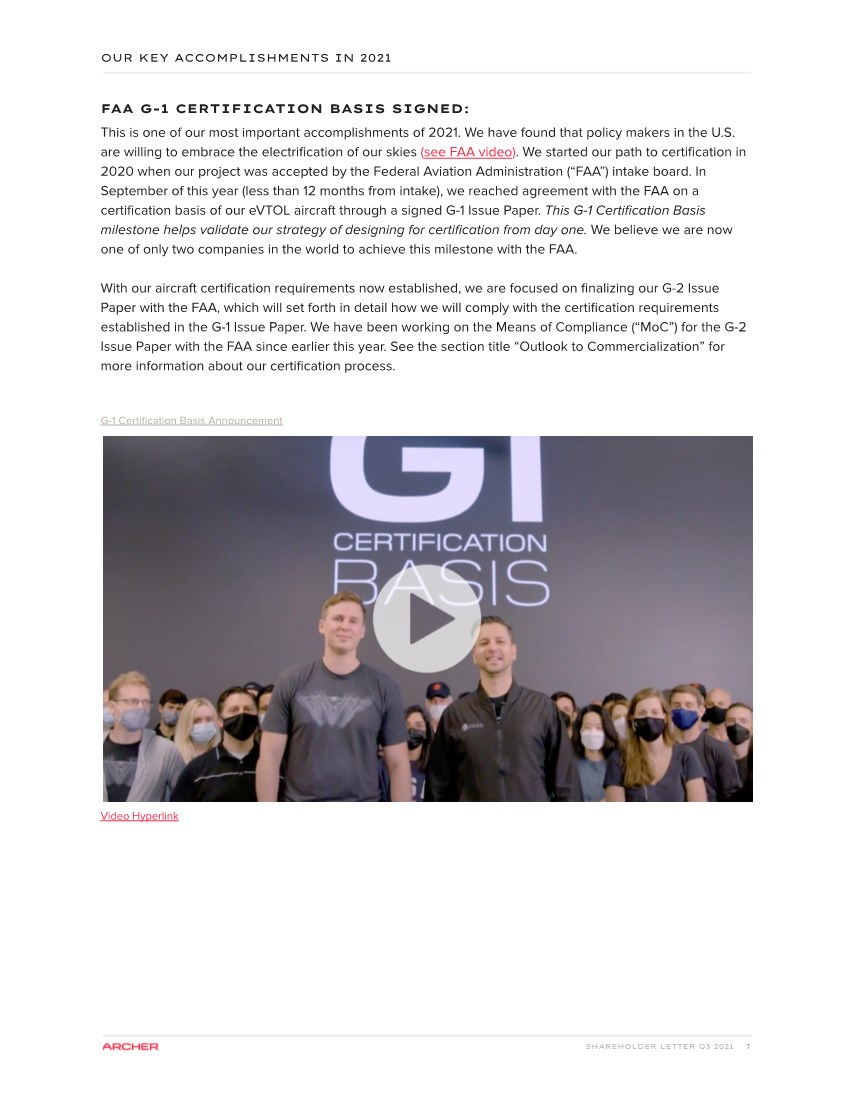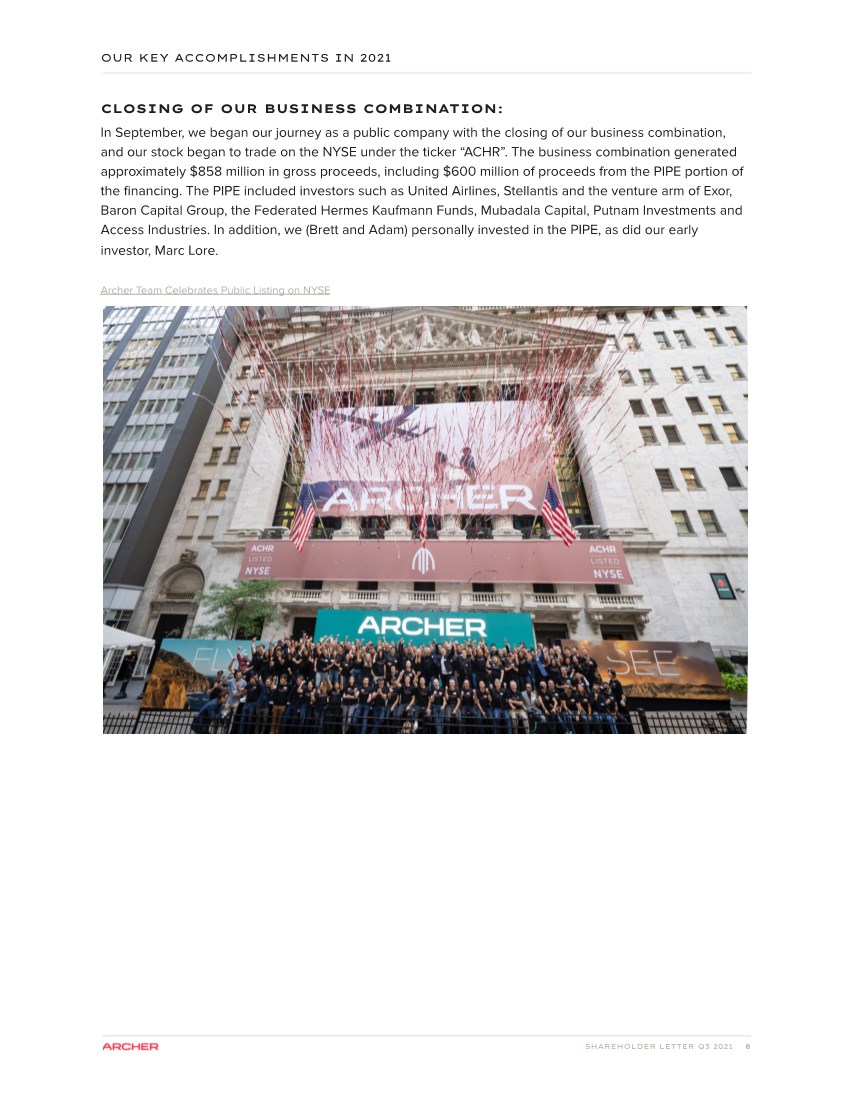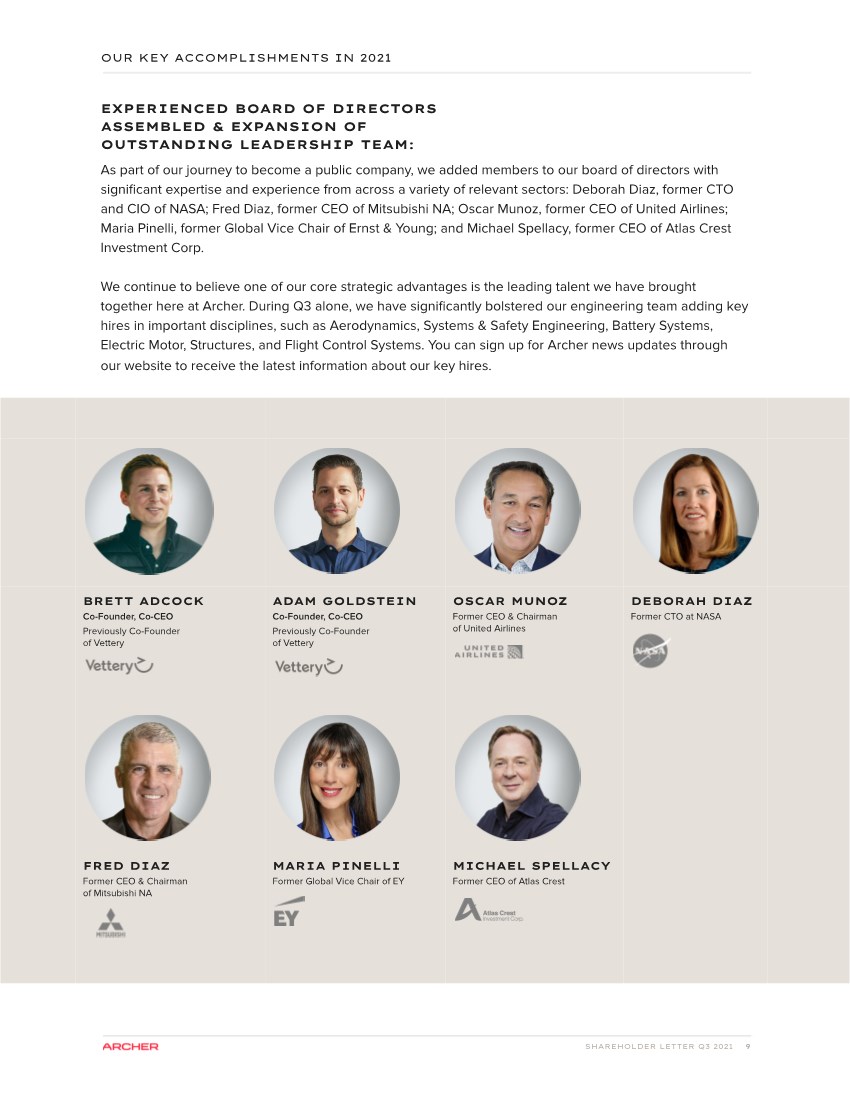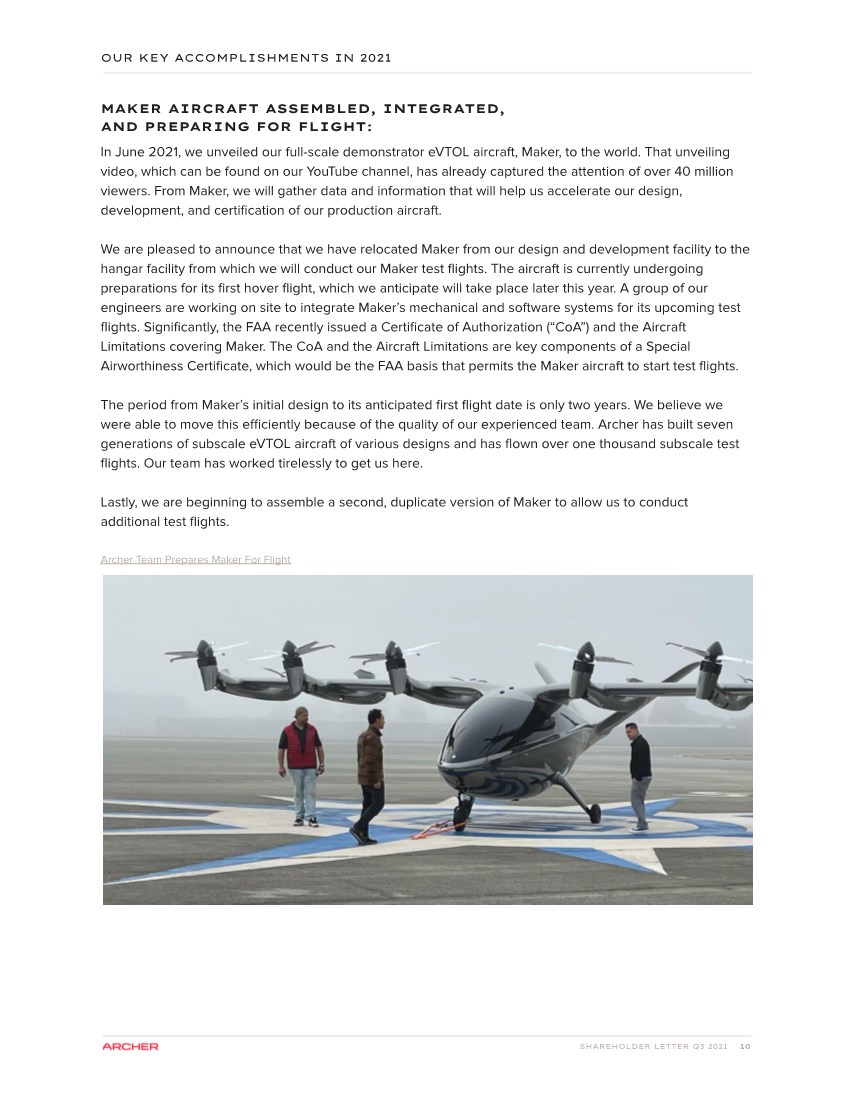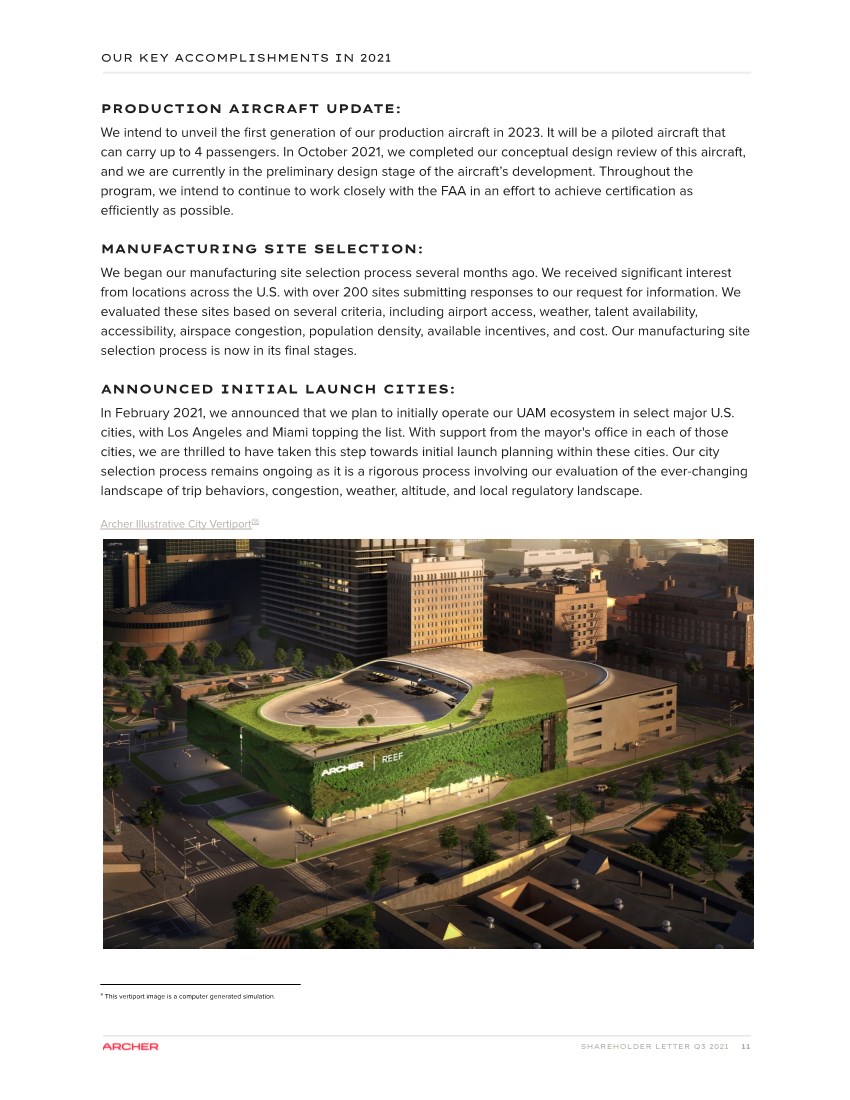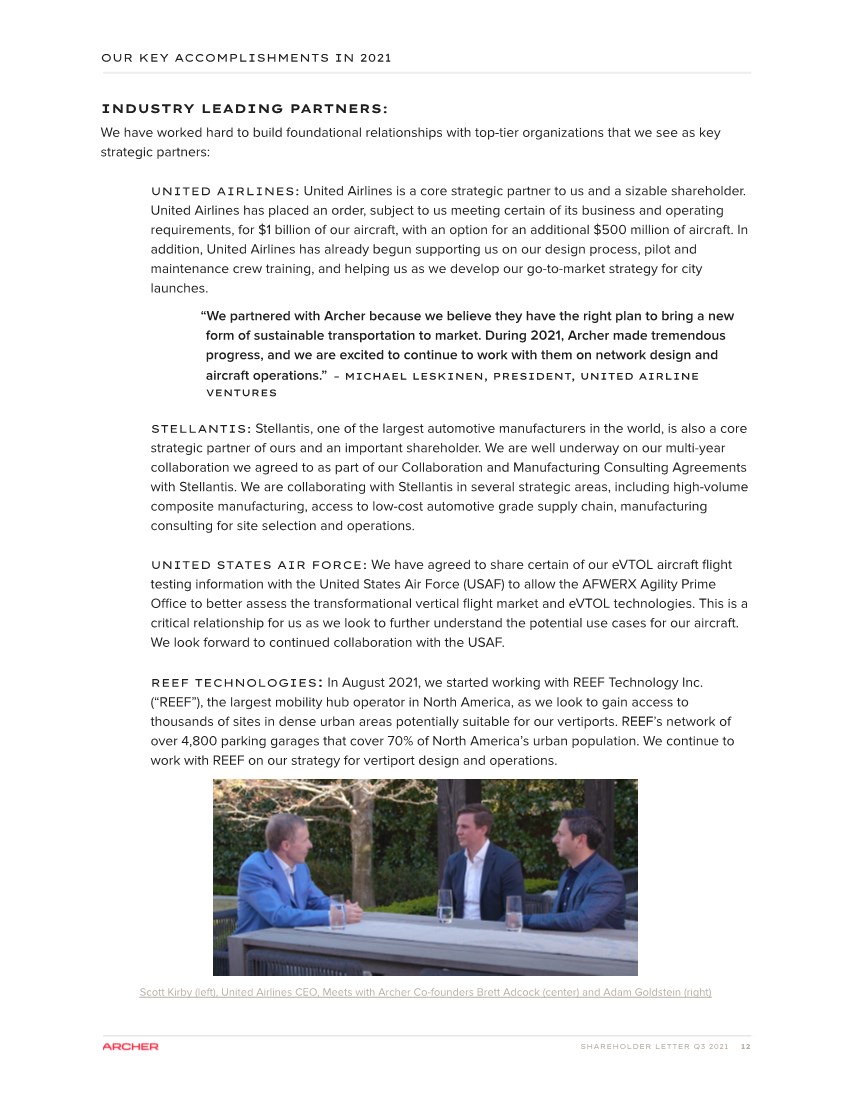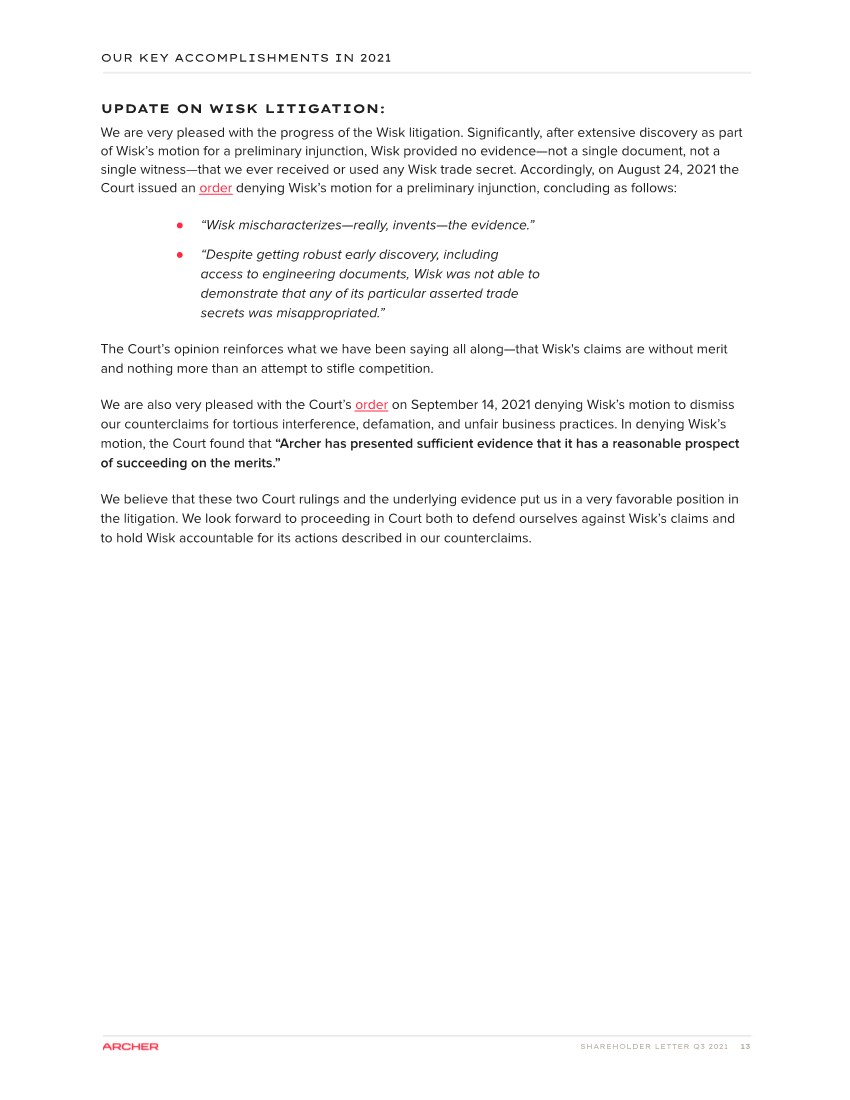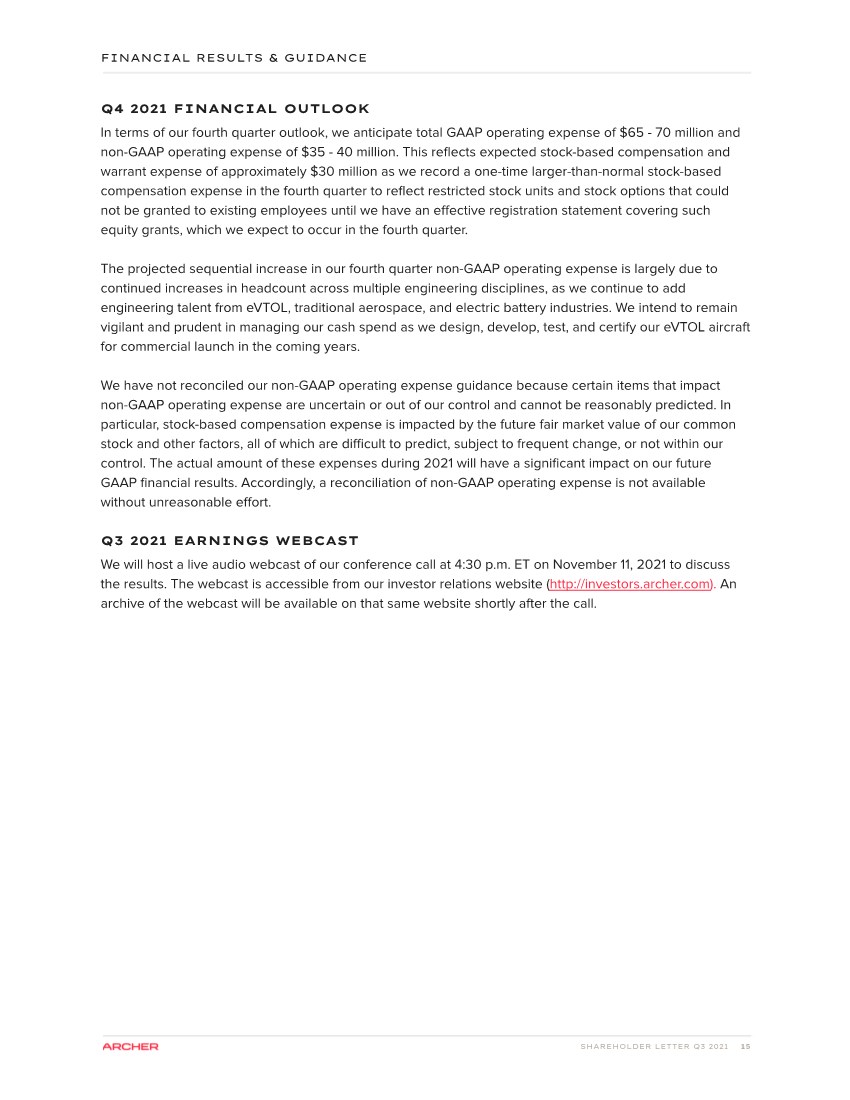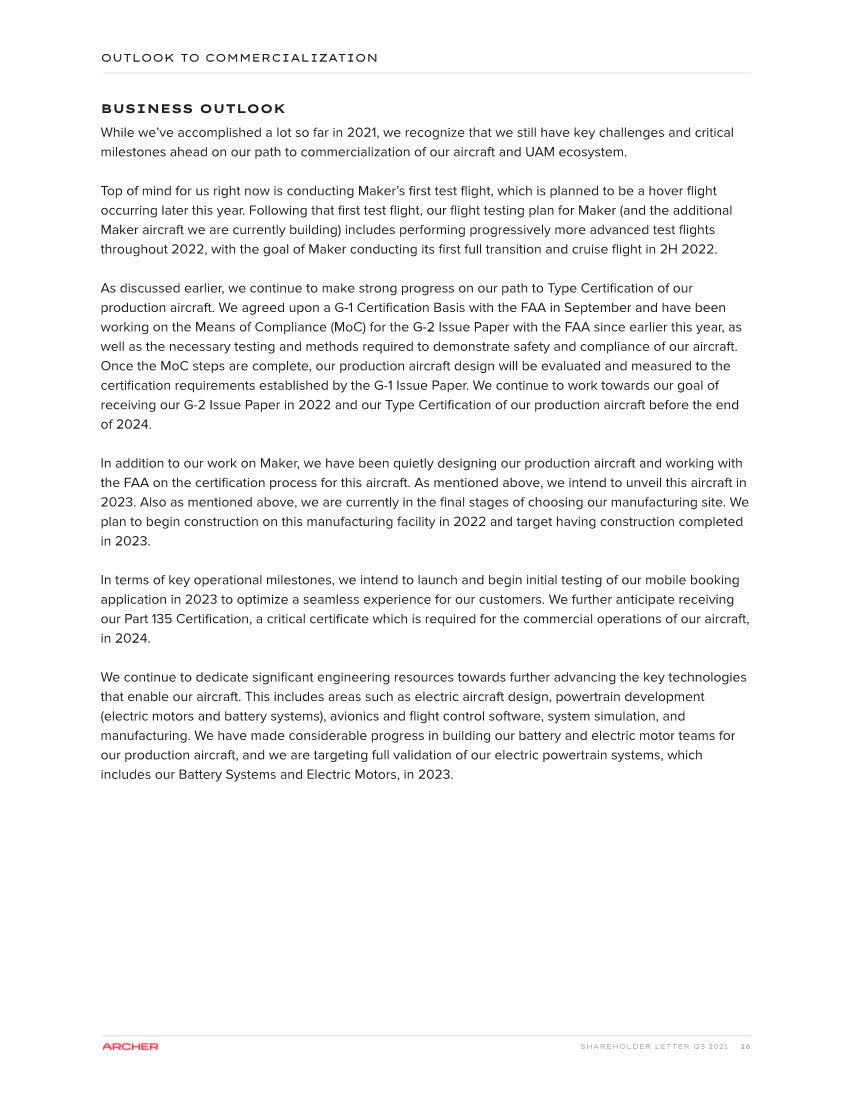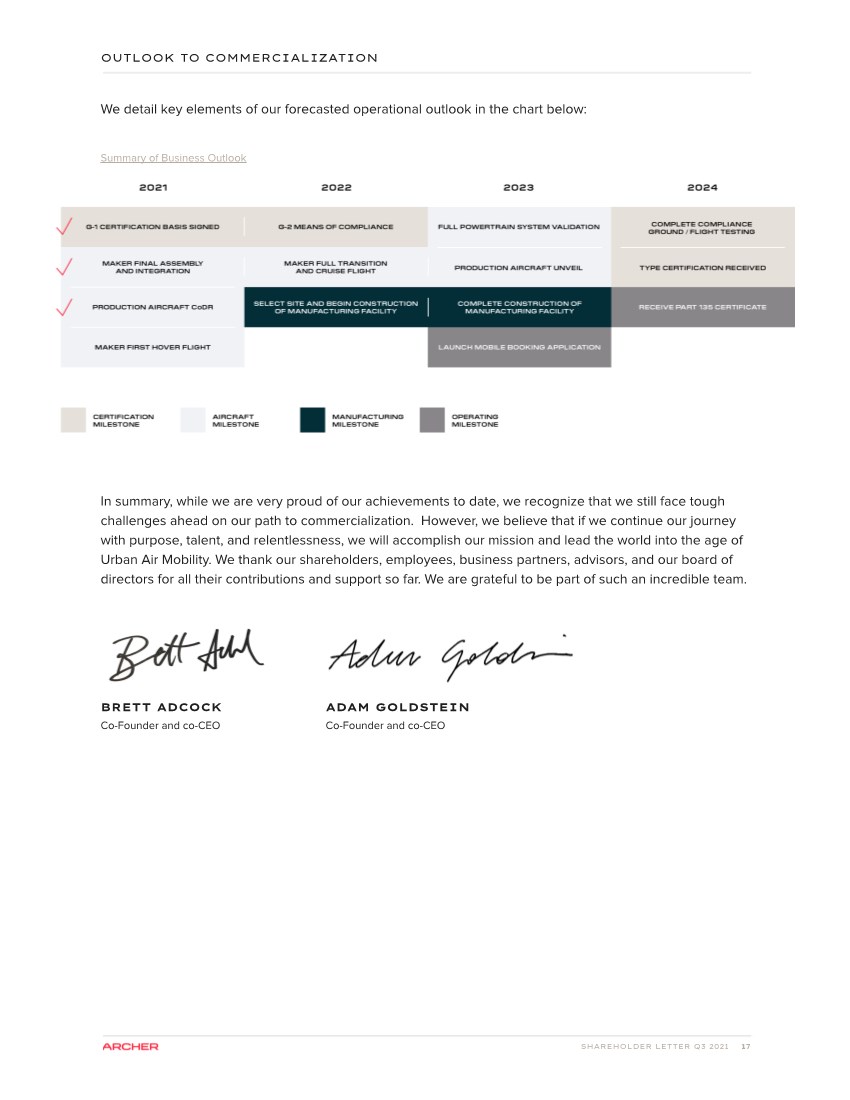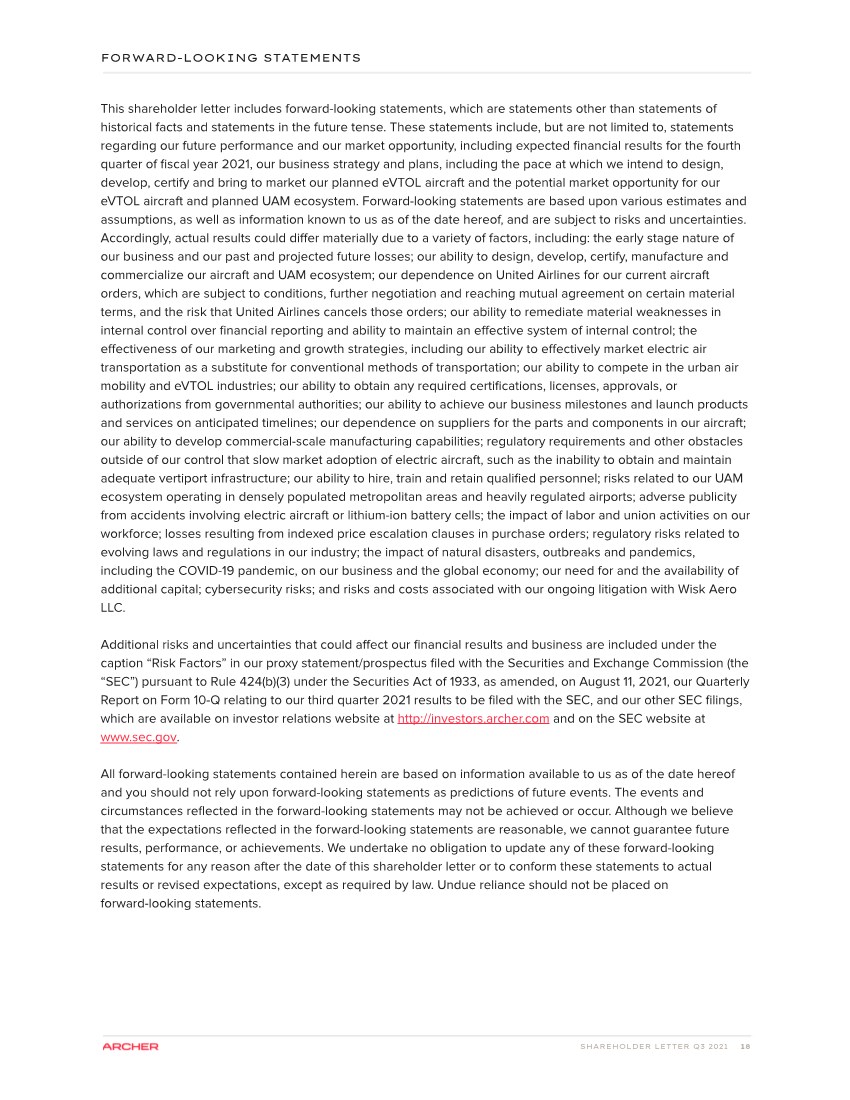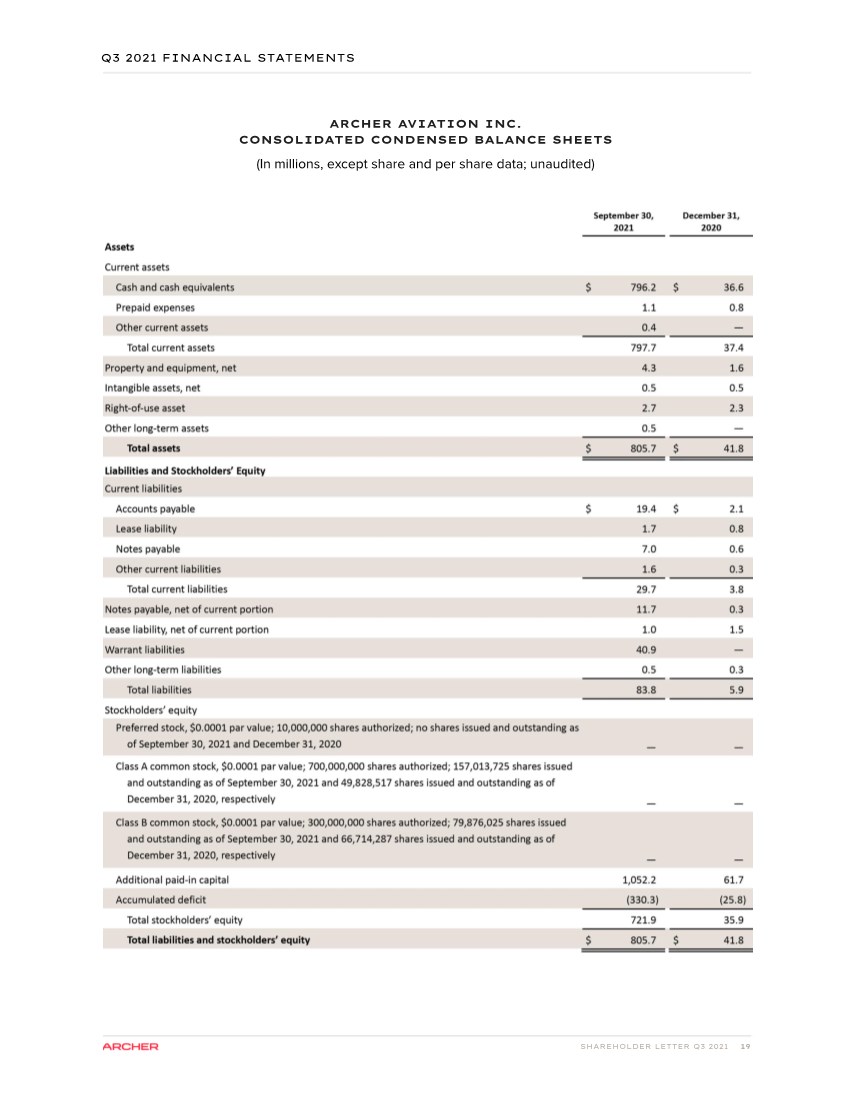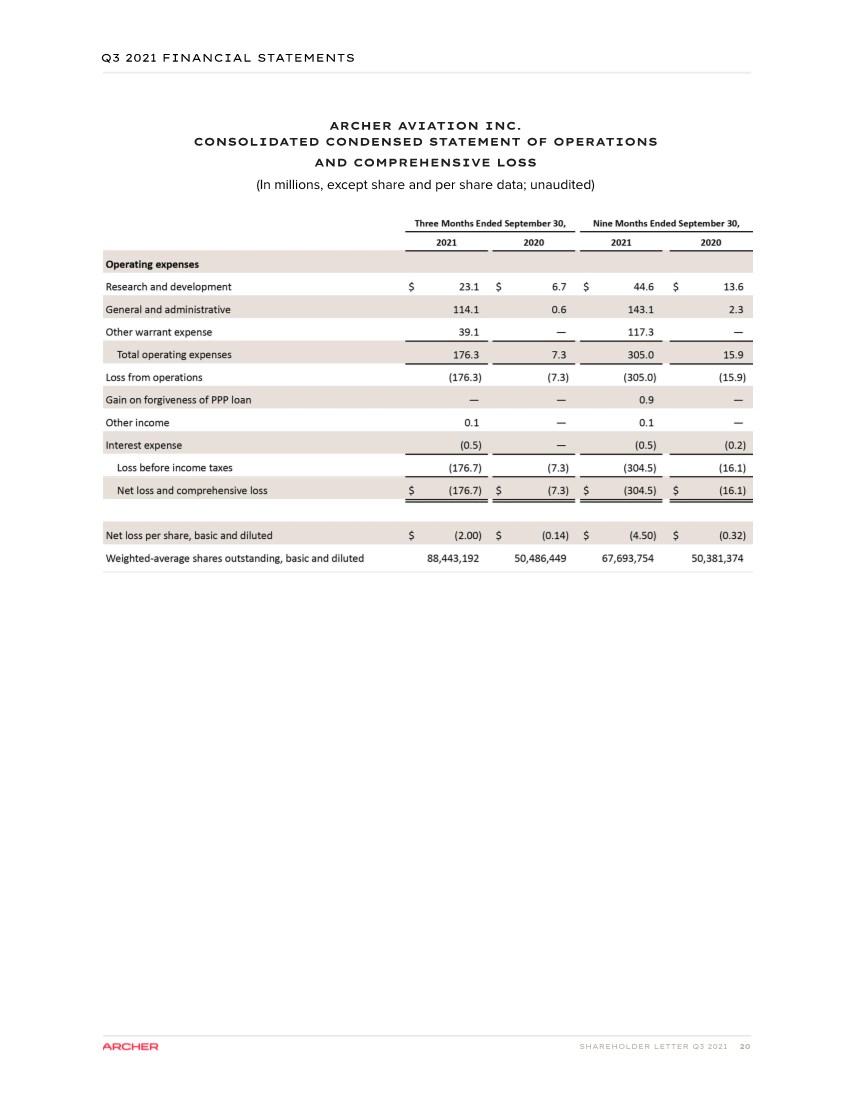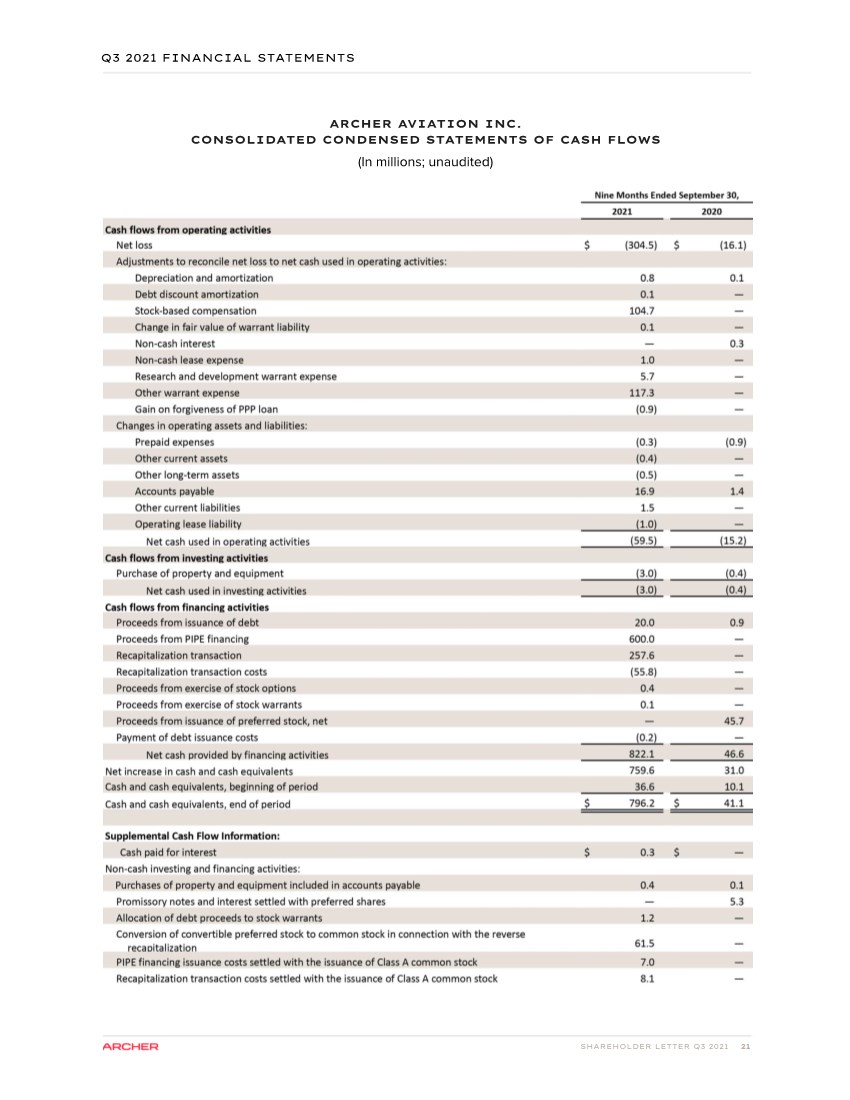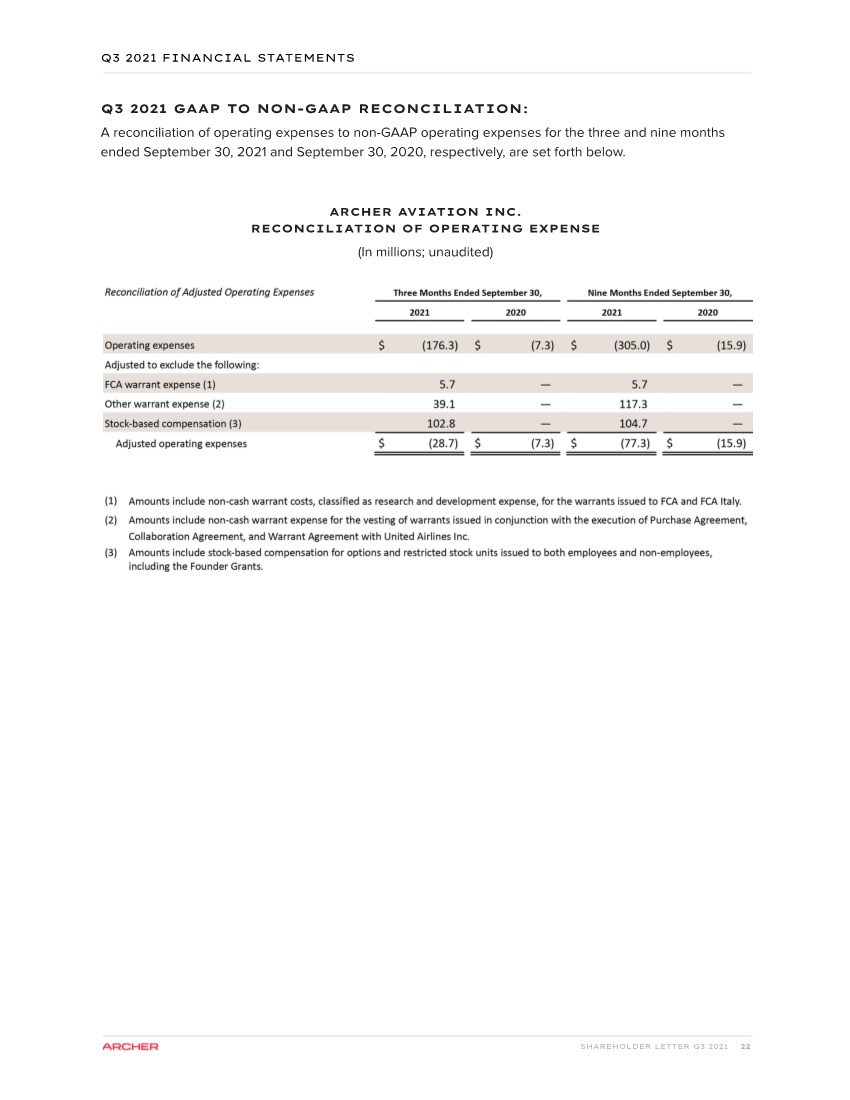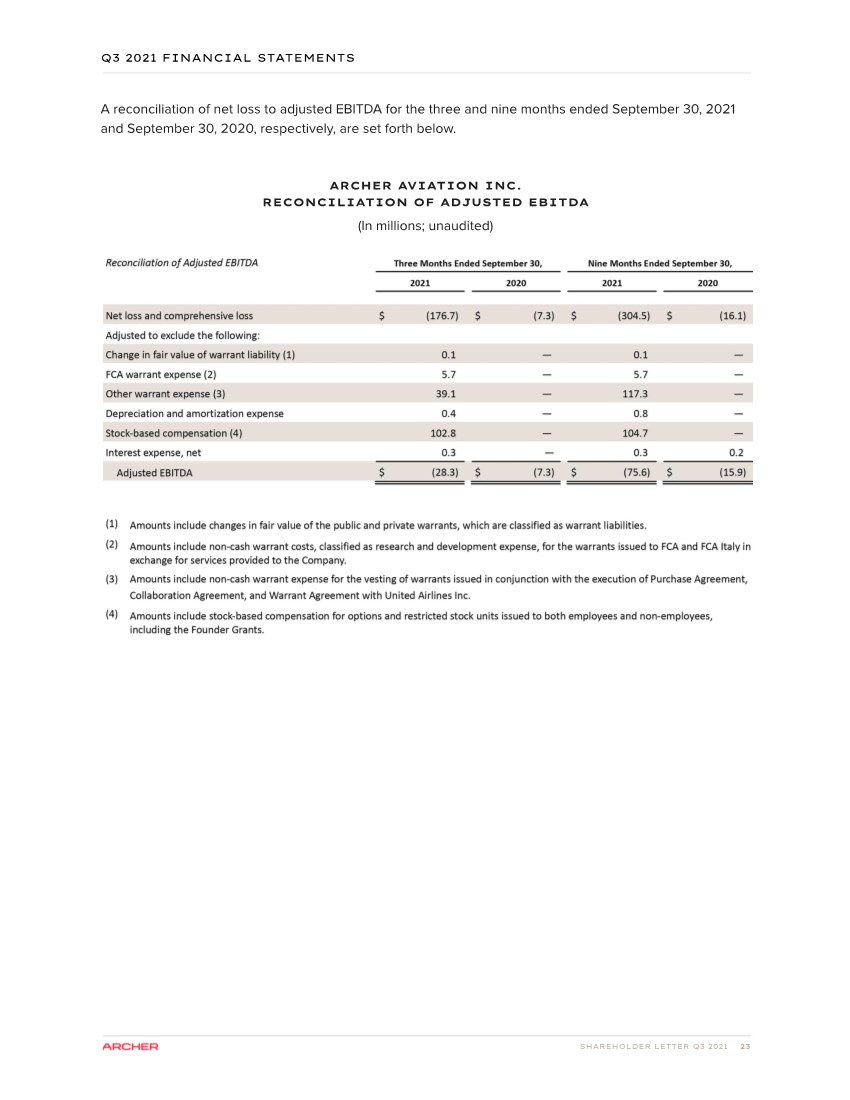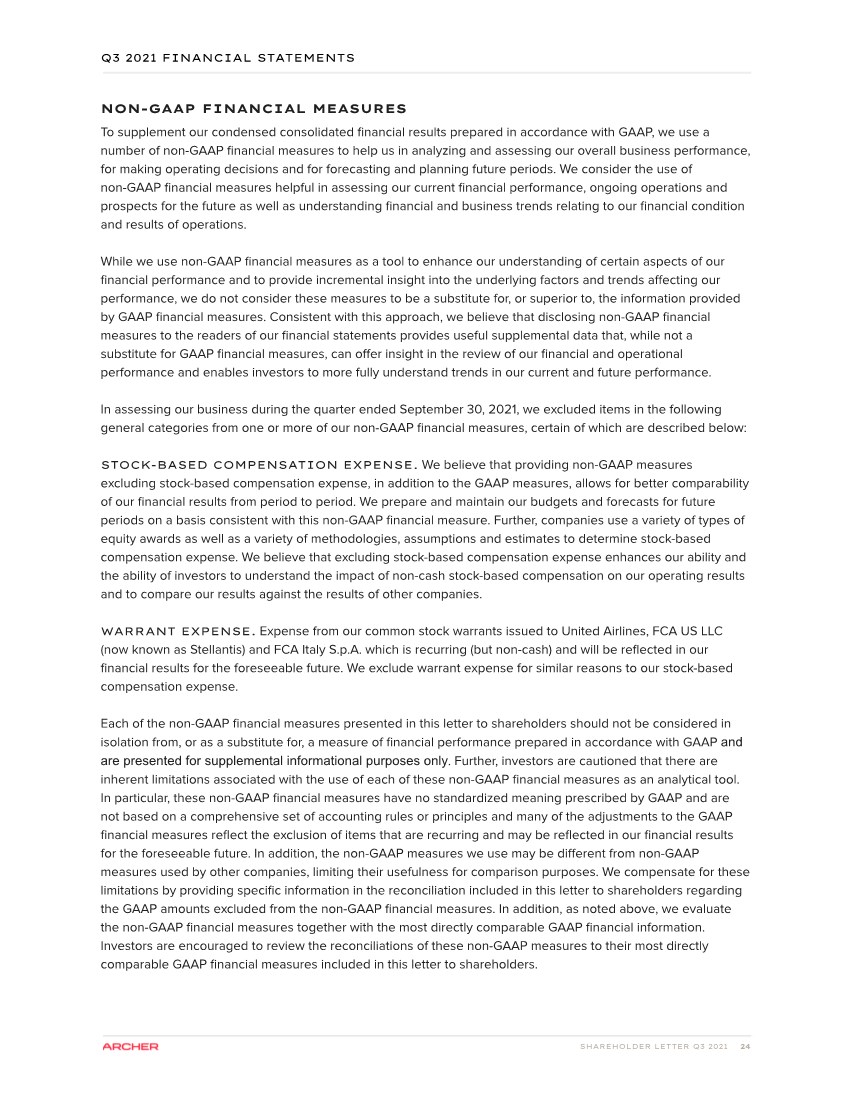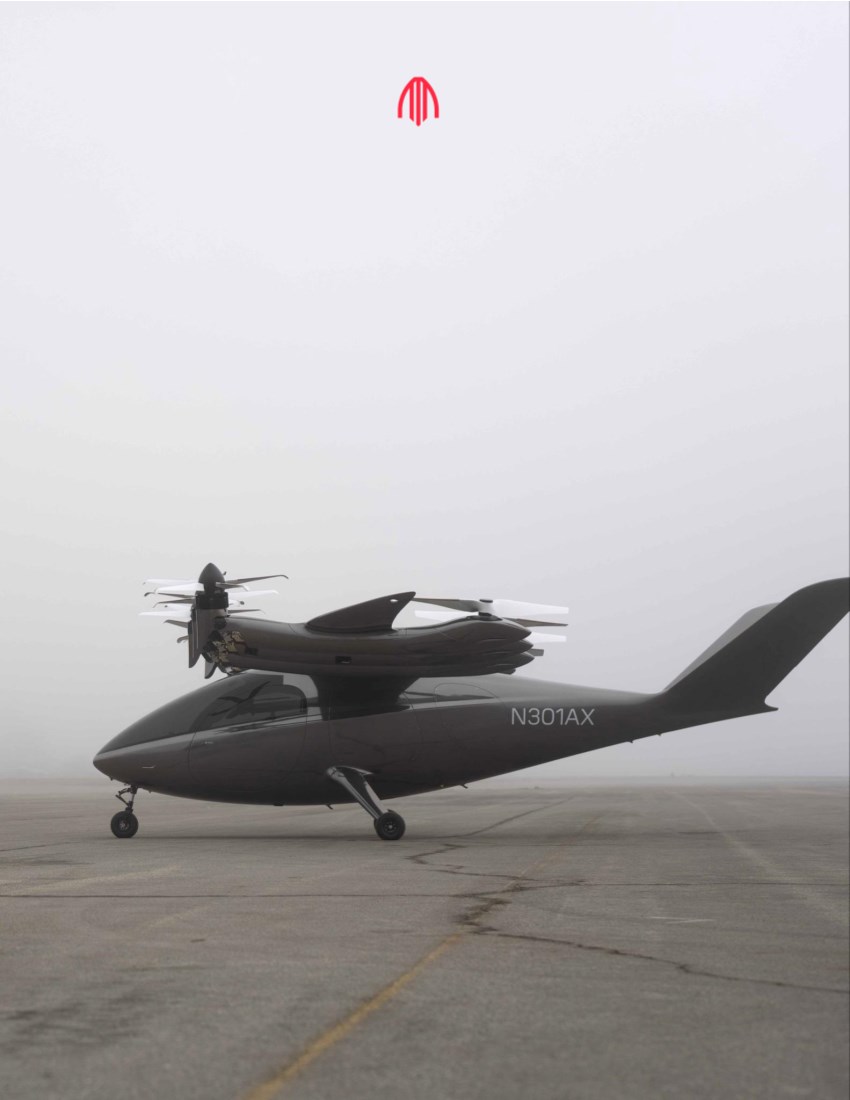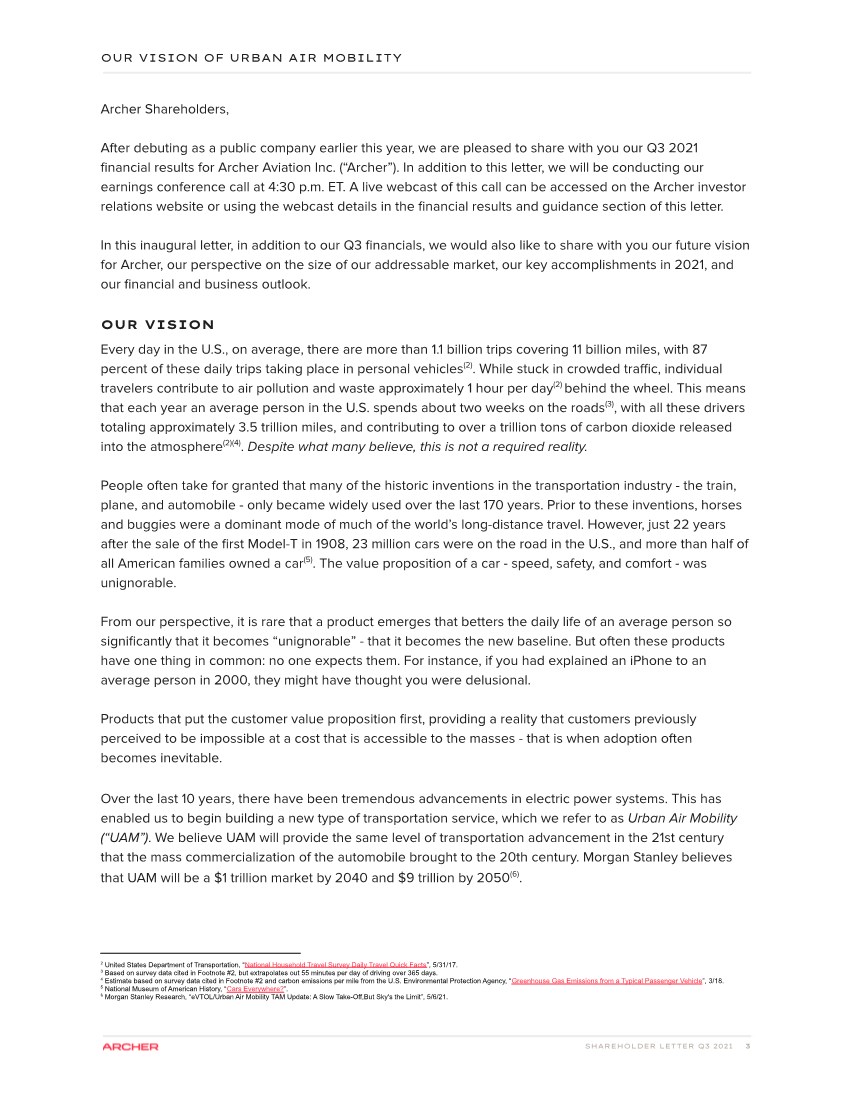
| OUR VISION OF URBAN AIR MOBILITY Archer Shareholders, After debuting as a public company earlier this year, we are pleased to share with you our Q3 2021 fnancial results for Archer Aviation Inc. (“Archer”). In addition to this letter, we will be conducting our earnings conference call at 4:30 p.m. ET. A live webcast of this call can be accessed on the Archer investor relations website or using the webcast details in the fnancial results and guidance section of this letter. In this inaugural letter, in addition to our Q3 fnancials, we would also like to share with you our future vision for Archer, our perspective on the size of our addressable market, our key accomplishments in 2021, and our fnancial and business outlook. OUR VISION Every day in the U.S., on average, there are more than 1.1 billion trips covering 11 billion miles, with 87 percent of these daily trips taking place in personal vehicles(2). While stuck in crowded trafc, individual travelers contribute to air pollution and waste approximately 1 hour per day(2) behind the wheel. This means that each year an average person in the U.S. spends about two weeks on the roads(3), with all these drivers totaling approximately 3.5 trillion miles, and contributing to over a trillion tons of carbon dioxide released into the atmosphere(2)(4). Despite what many believe, this is not a required reality. People often take for granted that many of the historic inventions in the transportation industry - the train, plane, and automobile - only became widely used over the last 170 years. Prior to these inventions, horses and buggies were a dominant mode of much of the world’s long-distance travel. However, just 22 years after the sale of the frst Model-T in 1908, 23 million cars were on the road in the U.S., and more than half of all American families owned a car(5). The value proposition of a car - speed, safety, and comfort - was unignorable. From our perspective, it is rare that a product emerges that betters the daily life of an average person so signifcantly that it becomes “unignorable” - that it becomes the new baseline. But often these products have one thing in common: no one expects them. For instance, if you had explained an iPhone to an average person in 2000, they might have thought you were delusional. Products that put the customer value proposition frst, providing a reality that customers previously perceived to be impossible at a cost that is accessible to the masses - that is when adoption often becomes inevitable. Over the last 10 years, there have been tremendous advancements in electric power systems. This has enabled us to begin building a new type of transportation service, which we refer to as Urban Air Mobility (“UAM”). We believe UAM will provide the same level of transportation advancement in the 21st century that the mass commercialization of the automobile brought to the 20th century. Morgan Stanley believes that UAM will be a $1 trillion market by 2040 and $9 trillion by 2050(6). 6 Morgan Stanley Research, “eVTOL/Urban Air Mobility TAM Update: A Slow Take-Off,But Sky's the Limit”, 5/6/21. 5 National Museum of American History, “Cars Everywhere?”. 4 Estimate based on survey data cited in Footnote #2 and carbon emissions per mile from the U.S. Environmental Protection Agency, “Greenhouse Gas Emissions from a Typical Passenger Vehicle”, 3/18. 3 Based on survey data cited in Footnote #2, but extrapolates out 55 minutes per day of driving over 365 days. 2 United States Department of Transportation, “National Household Travel Survey Daily Travel Quick Facts”, 5/31/17. SHAREHOLDER LETTER Q3 2021 3 |
